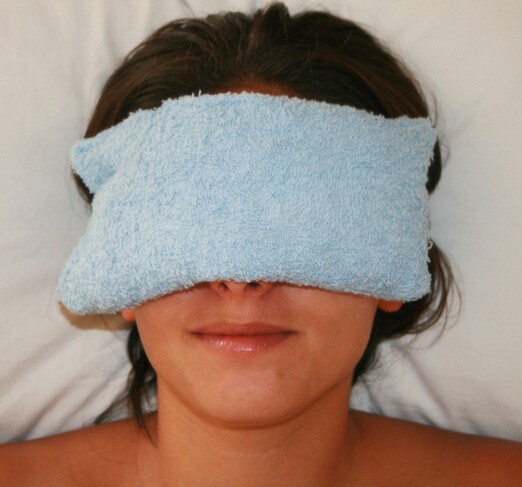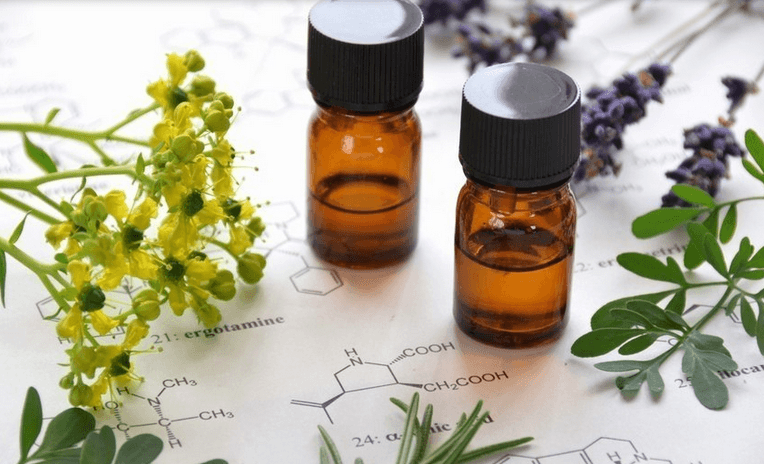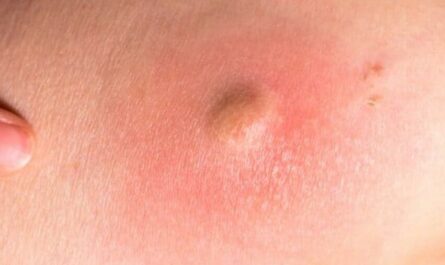Dealing with a stuffy nose can be incredibly frustrating and uncomfortable. It can make it difficult to breathe, disrupt sleep, and even affect your sense of smell. Fortunately, there are several simple and effective ways to alleviate nasal congestion and clear your stuffy nose. In this article, we will explore 15 easy and practical methods that you can try at home to find relief. Whether you’re dealing with allergies, a common cold, or sinusitis, these techniques can help you breathe easier.
Symptoms of a Stuffy Nose
Symptoms of a stuffy nose, also known as nasal congestion, may include:
- Difficulty breathing through the nose: The nasal passages feel blocked or obstructed, making it challenging to breathe in through the nose.
- Nasal discharge: You may experience a runny nose, with mucus that can be clear, white, yellow, or green.
- Sneezing: Nasal congestion can trigger frequent sneezing as the body tries to clear the blockage.
- Sinus pressure or pain: The blocked nasal passages can cause pressure or pain in the sinuses
- Reduced sense of smell: Nasal congestion can affect your ability to smell properly.
- Postnasal drip: Excess mucus may drip down the back of the throat, leading to a sore throat, coughing, or a hoarse voice.
- Snoring: Nasal congestion can contribute to snoring or worsen existing snoring problems.
- Headache: Sinus pressure and congestion can cause headaches, especially around the forehead and temples.
- Fatigue or difficulty sleeping: The discomfort and difficulty breathing through the nose can disrupt sleep, leading to fatigue or daytime sleepiness.
- Ear pressure or pain: Nasal congestion can affect the function of the Eustachian tubes. This can lead to ear pressure, pain, or temporary hearing loss.

Common Causes of a Stuffy Nose
1. Allergies
Allergic rhinitis is a common cause of a stuffy nose. It occurs when the immune system overreacts to allergens such as pollen, dust mites, pet dander, or mold spores. When these allergens are inhaled, the body releases histamine. This will cause inflammation and swelling of the nasal passages, leading to nasal congestion.
2. Sinusitis
Sinusitis is an inflammation or infection of the sinuses. They are air-filled cavities located behind the forehead, cheeks, and eyes. When the sinuses become infected or inflamed, the nasal passages can become blocked, resulting in a stuffy nose. This condition is often accompanied by other symptoms such as facial pain, pressure, or a headache.
3. Common cold
Nasal congestion is a typical symptom of a common cold. It is caused by a viral infection that affects the upper respiratory tract. The body’s immune response to the virus leads to inflammation and increased mucus production. This can block the nasal passages and result in a stuffy nose.
4. Nasal polyps
Nasal polyps are noncancerous growths that can develop in the lining of the nose or sinuses. They are often associated with chronic inflammation and can obstruct the nasal passages, causing nasal congestion. Nasal polyps can be caused by chronic sinusitis, asthma, or certain immune disorders.
5. Deviated septum
The septum is the thin wall of cartilage and bone that separates the nostrils. In some individuals, the septum is crooked or off-center, which is known as a deviated septum. This structural abnormality can obstruct the nasal passages and cause nasal congestion. A deviated septum can be present from birth or result from an injury to the nose.
6. Environmental irritants
Exposure to irritants such as cigarette smoke, strong odors, air pollution, or chemicals can irritate the nasal passages. These irritants can trigger inflammation in the nasal tissues, leading to congestion.
7. Hormonal changes
Some women may experience nasal congestion during pregnancy or due to hormonal fluctuations, such as during menstruation. The increase in estrogen levels during pregnancy can cause swelling of the nasal passages, leading to nasal congestion.
8. Medications
Certain medications, including decongestants and nasal sprays, can cause a rebound effect, leading to nasal congestion when used for an extended period. Continuous use of nasal decongestant sprays can cause the blood vessels in the nasal passages to become dependent on the medication. This will result in congestion when the medication is stopped.
9. Weather changes
Cold weather or dry air can cause the nasal passages to become dry and irritated, resulting in a stuffy nose. Cold weather can cause the blood vessels in the nose to constrict, leading to congestion. Dry air can also dry out the nasal passages, causing them to become inflamed and congested.
10. Food sensitivities
Some individuals may experience nasal congestion as a result of food allergies or sensitivities. Certain foods, such as dairy products or gluten, can trigger an immune response in susceptible individuals. This can lead to inflammation and congestion in the nasal passages.

16 Easy Ways to Stop Your Nose from Being Stuffy
1. Use a Humidifier
Dry air can irritate the nasal passages and exacerbate congestion. Using a humidifier can add moisture to the air, which can help thin out mucus and reduce inflammation in the nasal cavity. Be sure to use a cool-mist humidifier and keep it clean to prevent the growth of bacteria and mold.
For best results, place the humidifier in the room where you spend the most time, such as your bedroom or living room. Aim for a humidity level between 30-50% to avoid overly dry or damp air.
2. Try Steam Inhalation
Steam inhalation is an age-old remedy for a stuffy nose. The warm, moist air can help loosen mucus and soothe irritated nasal passages. Simply fill a bowl with hot water, drape a towel over your head, and breathe in the steam for 5-10 minutes. You can also add a few drops of eucalyptus or menthol essential oil to the water for added decongestant benefits.
For an extra boost, consider adding a few slices of fresh ginger or lemon to the steaming water. Ginger has anti-inflammatory properties, while lemon can help thin out mucus and provide a refreshing aroma.
3. Stay Hydrated
Drinking plenty of fluids can help thin out mucus and promote drainage, alleviating nasal congestion. Aim for at least eight glasses of water or other fluids daily. Warm liquids, such as herbal tea or broth, can be particularly soothing for a stuffy nose.
In addition to water, try incorporating fluids like warm lemon water, ginger tea, or bone broth into your diet. These beverages can provide additional benefits, such as vitamin C and anti-inflammatory compounds.
4. Use Saline Nasal Sprays or Rinses
Saline nasal sprays or rinses can help flush out mucus and moisturize the nasal passages, providing relief from congestion. You can purchase over-the-counter saline sprays or make your saline solution at home by mixing salt and warm water.
For a homemade saline solution, mix 1/2 teaspoon of salt with 1 cup of warm water. You can also use a nasal bulb or neti pot to gently flush out your nasal passages. Be sure to use sterile or distilled water to avoid introducing any contaminants.

5. Apply a Warm Compress
Placing a warm, damp compress over your nose and cheeks can help relieve sinus pressure and promote drainage. The warmth can also help soothe any facial pain or discomfort associated with nasal congestion.
For best results, soak a clean cloth in warm water, wring it out, and apply it to your face for 5-10 minutes. You can repeat this process as needed throughout the day for relief.
6. Try Nasal Decongestant Sprays (Temporarily)
Over-the-counter nasal decongestant sprays, such as oxymetazoline (Afrin) or phenylephrine (Sinex), can provide quick relief by constricting blood vessels in the nasal passages. However, these sprays should only be used for a few days, as prolonged use can lead to a rebound effect and worsen congestion.
If you choose to use a nasal decongestant spray, be sure to follow the instructions carefully and limit use to no more than 3 consecutive days. Overuse can lead to a dependency and potentially worsen your congestion in the long run.
7. Take Oral Decongestants
Oral decongestants, like pseudoephedrine (Sudafed) or phenylephrine, can help reduce nasal inflammation and congestion. These medications work by constricting blood vessels in the nasal passages, allowing for easier breathing. Be cautious, as they can cause side effects like insomnia, nervousness, and increased blood pressure.
It’s important to read the labels carefully and follow the recommended dosages for oral decongestants. Additionally, these medications may interact with certain prescription drugs or medical conditions. So it’s best to consult with your healthcare provider before taking them.
8. Use Menthol Rubs or Lozenges
Menthol, a natural decongestant found in peppermint and eucalyptus, can help thin out mucus and provide a cooling sensation that can alleviate nasal congestion. Try using menthol-based chest rubs, lozenges, or essential oils for relief.
For a DIY menthol rub, mix a few drops of peppermint or eucalyptus essential oil with a carrier oil, such as coconut or almond oil. Gently massage the mixture onto your chest, throat, and the area around your nose for a soothing and decongestant effect.
9. Avoid Irritants
Certain irritants, such as smoke, strong odors, and cold air, can exacerbate nasal congestion. Try to identify and avoid any potential triggers that may be causing or worsening your stuffy nose. If you’re sensitive to certain allergens, consider using air purifiers or taking allergy medication to help alleviate congestion.

10. Use a Neti Pot
A neti pot is a small container used to rinse out the nasal passages with a saline solution. This ancient practice can help flush out mucus and irritants, providing relief from congestion. Be sure to use sterile or distilled water and follow proper cleaning instructions to avoid potential infections.
After using a neti pot, it’s important to thoroughly clean and dry it to prevent the growth of bacteria or mold. Consider adding a few drops of tea tree oil to the saline solution for its antimicrobial properties.
11. Try Acupressure
Acupressure, a form of traditional Chinese medicine, involves applying pressure to specific points on the body to alleviate various ailments. Some acupressure points, such as those around the nose and eyebrows, may help relieve sinus pressure and congestion.
To try acupressure for a stuffy nose, gently massage the area between your eyebrows and the bridge of your nose using your fingertips. You can also apply pressure to the fleshy area just below your cheekbones, near the corners of your nose.
12. Elevate Your Head While Sleeping
Sleeping with your head slightly elevated can help promote drainage and reduce nasal congestion. Use extra pillows or adjust the angle of your bed to keep your head raised while you sleep.
Elevating your head can also help prevent mucus from accumulating in your nasal passages and sinuses, allowing for easier breathing throughout the night.
13. Use a Nasal Strip
Nasal strips are adhesive bandages that gently lift the nostrils and can help improve airflow. This makes it easier to breathe through a stuffy nose. These strips can be particularly helpful for nighttime congestion.
Nasal strips work by gently opening the nasal passages, allowing for better airflow and reducing the effort required to breathe through your nose. They’re a convenient and drug-free option for temporary relief.

14. Try Essential Oils
Certain essential oils, such as eucalyptus, peppermint, and tea tree oil, have decongestant and anti-inflammatory properties that may help alleviate a stuffy nose. You can add a few drops to a diffuser, inhale the vapors directly, or create a DIY chest rub.
When using essential oils, be sure to follow proper dilution guidelines and avoid applying undiluted oils directly to your skin. Additionally, some essential oils should be avoided during pregnancy or for young children, so consult with a healthcare professional if you have any concerns.
15. Consider Zinc Supplements
Some studies suggest that taking zinc supplements at the onset of a cold may help shorten the duration of nasal congestion and other symptoms. However, more research is needed to confirm the effectiveness of zinc for this purpose.
If you decide to try zinc supplements, be sure to follow the recommended dosages and consult with your healthcare provider, especially if you have any underlying medical conditions or are taking other medications.
When to See a Doctor?
While a stuffy nose often resolves on its own within a week, you should seek medical attention in the following situations:
- Congestion that persists for more than 10 days without improvement
- Thick yellow or green nasal discharge along with sinus pain or fever
- Bloody or pus-like nasal discharge
- Difficulty breathing
- Swelling around the eyes or forehead
- Severe headache or facial pain
- High fever over 101°F (38.3°C)
- Symptoms that worsen or fail to respond to over-the-counter treatments






